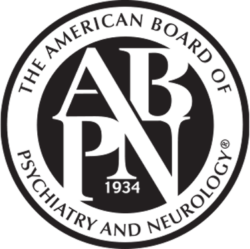In addition to earning Maintenance of Certification (MOC) points through CME and learning activities, you can also earn them through self-assessment CME (SA-CME), self-assessment modules (SAM) and lifelong learning modules. The requirements for these vary according to clinical specialty and you can find a complete listing of the requirements on the American Board of Medical Specialties (ABMS) website.
Self-assessment generally includes all material that falls under category-1 CME, including printed, recorded or computer-based education activities. It also includes journal-based CME self-assessment modules. The specifics will vary by specialty.
Generally speaking, physicians can earn SAM credits when they complete CME programs that are specifically structured for SA-CME. As is true with all CME and MOC courses and activities, the programs must be accepted and credited by the accrediting body.
Here are some examples of additional MOC requirements and offerings:
American Academy of Child and Adolescent Psychiatry: The AACAP offers lifelong learning modules. Each module is completed by reading approximately 35 journal articles and completing a pre- and post-test on the materials. Physicians earn AMA PRA Category 1 Credits™ that have been approved by the American Board of Psychiatry and Neurology (ABPN) for both CME and self-assessment requirements.
The AACAP also provides Performance in Practice (PIP) modules for SA-CME credit. According to the academy, PIP is a “…quality improvement exercise designed to identify and implement areas for improvement based on the review of one’s own patient charts (Clinical Module) or feedback from peers or patients via a questionnaire/survey (Feedback Module).”
Number of units required:
- 10-year Maintenance of Certification (diplomates with time-limited certificates issued prior to 2012)
- One PIP unit per 10-year cycle
- Continuous Maintenance of Certification (diplomates who took an exam [initial or MOC] in 2012 or later)
- One PIP unit per three-year stage
American Board of Medical Specialties: Multi-specialty MOC portfolio program. This program recognizes physician participation in quality improvement programs in their local institutions. The board says the Multi-Specialty MOC Portfolio Approval Program (Portfolio Program), “…is an alternative pathway for healthcare organizations that support physician involvement in quality improvement (QI) and MOC to have their QI efforts be approved for MOC Part IV credit. The ABMS Portfolio Program website has a list of portfolio program sponsors.
American Board of Psychiatry and Neurology: The ABPN offers self-assessment activities to assist physicians in “recognizing their current knowledge base in order to identify specific topics for gaining further knowledge”. The program has the following requirements:
- Diplomates in the C-MOC program must complete at least eight SA-CME per year, averaged over three years.
- Diplomates in the 10-Year MOC program must complete at least 24 self-assessment CME credits prior to applying for recertification.
- Self-assessment activities must be ABPN-approved since not all Category 1 CME activities meet specific Self-Assessment activity requirements.
- Choose from the following to complete Self-Assessment activities:
- Select activities from the ABPN Approved Products List.
- Some no-cost or reduced cost ABPN-approved activities on the list are available to members through their professional society.
- Gain credit for up to two different types of Non-CME Self-Assessment Activity Options.
- Complete Self-Assessment (Part II) activities under the auspices of an International Certification Organization (e.g. RCPS-C) that meets the ABPN MOC requirements; submit for preapproval.
The American Board of Dermatology: ABDERM offers expanded options for diplomats to obtain self-assessment (SA) credits for (MOC) that increase flexibility. ABDERM lists the activities that provide SA credit as follows:
- Journal-Based Self-Assessment: Clinically relevant multiple-choice questions are presented in peer-reviewed journals, followed by an evidence-based discussion about the answers. Question results are self-graded by the reader. Credit: 1 SA credit per question
- Live Sessions Integrating Audience Response System (ARS) Questions: ARS questions ask audience members clinically relevant knowledge or practice-related questions, individuals answer using an ARS transponder, and the resulting spread of answers by the entire audience is provided for all participants to see. The answers are then discussed in an evidence-based fashion. Credit: 10 SA credits for every hour of activity performed, or 1 credit per question, whichever is greater.
- Live Simulation Sessions: These can be kinesthetic simulations (suture labs, nail procedure labs, flap labs, cosmetic injection labs, etc) or communication simulations (simulated patient interactions). To qualify, the sessions must involve hands-on by participants and include individualized performance feedback provided by experts in the subject matter. Credit: 10 SA credits for every hour of activity performed, or 1 credit per question, whichever is greater.
- Baseline or Re-Measurement Steps of Any MOC-Approved Practice Improvement (PI): A diplomate completing a Practice Improvement (PI) activity will now simultaneously obtain SA credit for all chart reviews or other measurement steps performed. Credit: 25 SA credits, in addition to the PI credit, for every baseline measurement or re-measurement that is performed.
- Live Sessions Integrating Dermatopathology Slide Self-Assessment: A diplomate looks at unknown path slides, makes a diagnosis, and then listens to experts discuss both the correct and incorrect answers. This adheres to the attempt-and-then-receive-feedback-to-improve model of SA in a live venue without requiring ARS equipment. Credit: 10 SA credits for every hour of activity performed, or 1 credit per question, whichever is greater.
- Traditional Self-Assessment Authorship and Editing: Individuals who author, edit, and peer-review MOC SA questions will obtain SA credit to the same extent as those answering the questions. Participation in the peer-review process is required to qualify. Credit: 10 SA credits for every hour of activity performed, or 1 credit per question, whichever is greater.
As with CME and MOC, these additional and optional requirements vary widely by specialty. A thorough review of the options offered by your specialty board will give you the most versatility in meeting MOC requirements.
Deciding Which CME Course is Right for You? Use the CME activity finder tool below to find the online course that best fits your needs and will help you meet your CME requirements.
Want to learn more about CME and MOC requirements? Download our Free eBook, Navigating Continuing Medical Education: A Guide to CME/MOC Requirements.








